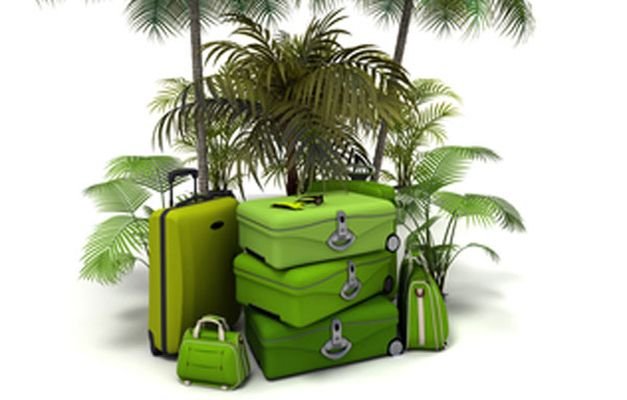You can be a more sustainable traveler by taking planes less and using public transportation more, by walking and biking when possible, by thinking ahead so you can avoid single-use plastic in the form of water bottles and takeout bags, and by requesting that hotels don’t change your sheets every day.
But as someone who has had the privilege of traveling everywhere from remote, off-the-grid communities in Alaska to bustling city metropolises of Southeast Asia, I’ve learned the importance of carrying a travel bag of green essentials too. Whether you’re in the remote wilderness or a populated metropolis, it’s 100 percent possible to be an environmentally conscious traveler as long as you have just a few things on hand.
So grab a small tote, throw in these eight products, and head off into the world holding your head up high knowing you are a much greener jet-setter:
1. Reusable bags.
In Asia, it’s common to see plastic bags lining riverbanks and roadsides. These plastic bags are wreaking havoc on the quality of our oceans, and animals on land and water are eating them and getting sick (at best). Wherever in the world you’re heading, learn how to say the phrase “no plastic” in the native language. Refusing to take a plastic bag with you from stores goes a long way in this fight against single-use plastics. Just imagine what would happen if we all did it!
2. A steripen and filtration straw.
Drinking tap water in an unknown place can be a little disconcerting, which is why many travelers buy countless bottles of drinking water throughout their adventures. Portable purification systems like Steripen are a great solution if you’re concerned about water quality. I’ve tested mine from the rivers of Nepal to the faucets of India and have never had an issue. In Alaska, I always kept a filtration straw in my first aid kit too, just in case my Steripen batteries ran out.
3. A reusable bottle.
We could fill an entire continent with our used plastic bottles alone (just look at the Pacific Garbage Patch). These days, there are so many reusable bottles and tea and coffee cups out there. Which one will you carry with you on the road?
4. Reusable utensils and straws.
Those plastic straws served with every smoothie, fruit juice, and soft drink add up quick. (We go through 500 million every day in the United States alone.) The same goes for single-use chopsticks, cups, plates—the list goes on and on. If you like to use utensils or straws, then bring your own. Bamboo utensils and straws are light, easy to clean, and environmentally friendly.
5. A tiffin container for take-away food.
During my travels through India, I learned what an amazing tool a tiffin lunch box is. They let you transport your leftovers or takeout without all the Styrofoam and plastic packaging. And if you’re traveling somewhere where eating out is expensive, you can load yours up with hummus, yogurt, fruits, and nuts for a snack on-the-go.
6. A diva cup.
The average woman uses roughly 11,000 tampons in her lifetime. The time it takes for a tampon or pad to biodegrade in a landfill is centuries longer than the life span of the woman who used it (particularly when it’s wrapped in a plastic wrapper or bag). I have been a happy Mooncup user for nearly 10 years, and in my opinion cups are the healthiest and safest option for our bodies.
Other eco-friendly alternatives to disposable pads and tampons include reusable pads (which I personally find to be difficult to travel with, but great at home) and unbleached, organic cotton varieties of disposables if you’re in a pinch.
7. A solar-powered charger.
If beachy, bright travel is on your horizon, why not take advantage of the sunshine with a solar charger? Bonus: Power outlets aren’t always available in certain parts of the world, but the sun almost always is.
8. A universal sink plug.
If you are a minimalist traveler like myself, packing only a few articles of clothing, a sink plug can make it easy to keep them clean wherever you’re heading. My personal routine is to wash my dirty clothes every morning in the sink and then hang them to dry. This way, I don’t have to wait until I have a full load to tackle the dirty laundry problem.
written by Kori Hahn






